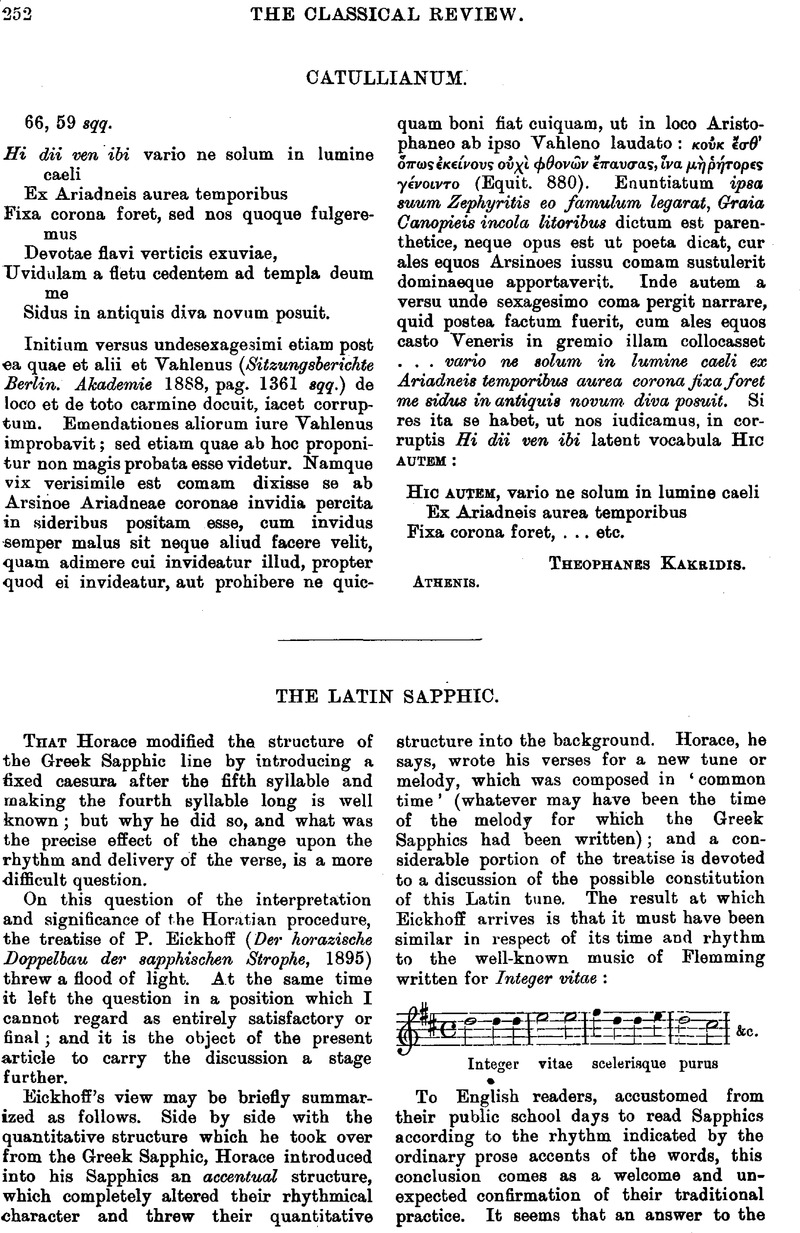No CrossRef data available.
Article contents
The Latin Sapphic
Published online by Cambridge University Press: 27 October 2009
Abstract

- Type
- Original Contributions
- Information
- Copyright
- Copyright © The Classical Association 1903
References
page 253 note 1 The reason given by Eickhoff, Nachtrag is somewhat different. He thinks the object of Horace was to make the second foot like the fourth.
page 254 note 1 It would be tempting to suppose that Horace shortened the third syllable of his Sapphies according to the law of ‘Breves Breviantes’: and it is worth noticing that the third syllable never has a principal word-accent. But this hypothesis would require a great deal more evidence to support it than is forthcoming; and I mention it only to reject it.
page 254 note 2 I see no necessity to call the i of Diana long in Carm. Saec. 70; for this line has the Greek rhythm.
page 254 note 3 The publication of the present article has been delayed through pressure of other work.
page 254 note 4 I presume Prof. Eickhoff means the accentual.
page 255 note 1 The music takes care of its own rhythm.
page 255 note 2 All these exceptions are carefully tabulated by him: e.g. I 10.1, 6, 18; I 12.1; I 25. 11; I 30. 1; II 16. 26; III 22. 2; III 27. 10.
page 255 note 3 Westphal, J. H. H. Schmidt and Christ are united in regarding the specially Horatian caesura as inexplicable; in fact they practically condemn every verse which has it as defective.
page 256 note 1 These lines have the second and third feet inverted: cf. p. 29 ‘Ay, and when the Prophecy her tale hath finished,’ ‘Love be imperishable, love be young’ (catalectic); p. 26 ‘Heard not nor pitied her nor made reply’ (cat.). This inversion is employed by Klopstock in the second line of every stanza of his ‘Selmar und Selma’ (Eickhoff, p. 49 f.).
page 256 note 2 This line has a dactyl for the spondee of the second foot; so too the fourth line quoted above from p. 19.




